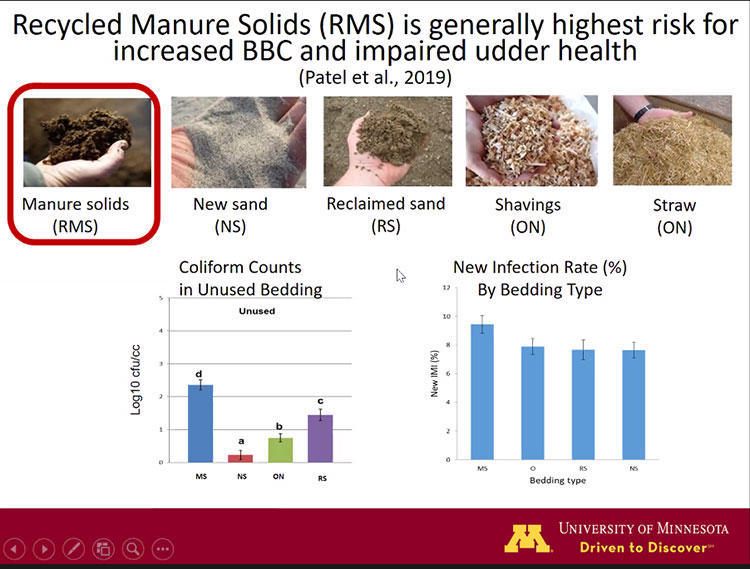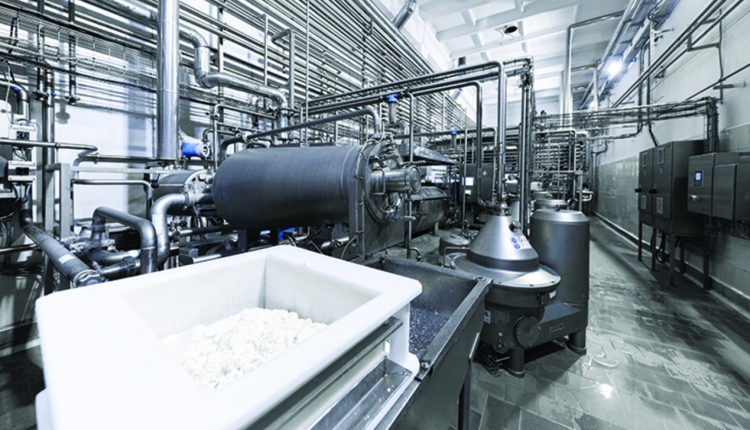
Since bedding bacteria counts are associated with impaired udder health, there is enhanced emphasis on monitoring bedding hygiene and managing manure and bedding in barns. Dry sand, drum composters or hot-air dryers, and bedding choices also affect udder health.
Sandra Godden, a University of Minnesota College of Veterinary Medicine professor, likes to summarize her studies with “The Three B’s” of udder health, which are bedding, bacteria, and better management.
Although, of course, bedding does affect mastitis, Godden said, “Bedding does a number of other important things. There’s the comfort factor, the traction factor, absorbency, cleanliness, and when those functions are properly addressed or met, we can have good impacts as opposed to bad.”
Godden was involved in a study of 168 herds in 17 states that tested new sand, recycled sand, manure solids, and organic non-manure materials used as bedding. They looked mainly at the association between bacterial levels in bedding and DHI measures of herd health, namely the somatic cell count data.
“As coliform counts in ready-to-use, unused bedding increased, udder health got worse,” Godden said during the National Mastitis Council’s “Improving Udder Health through Better Bedding Management.” Similarly, as strep counts in unused bedding increased, it also negatively affected udder health.

Lower your risk
To best mitigate this risk, Godden recommends choosing a low-risk bedding material.
“I’m pretty sure the vast majority of people would say . . . manure solids is probably the highest risk, and new or virgin sand is probably the lowest risk, and that’s correct. That’s exactly what the research bears out,” Godden said.
Of course, some herds had success with this type of bedding, which led to evaluating moisture, pH, and management factors, like processing, storage, seasonality, and regional differences.
Godden’s studies also looked at drum composting or mechanical hot air drying and their effect on reducing bedding bacteria count. They found that for recycled manure solids, Midwest herds using drum composters or hot-air drum dryers had lower bedding bacteria counts and better udder health.
A deeper discussion
As for bedding management, Godden recommended daily bedding, correct stall design, removal of wet bedding, scraping, and preventing standing water.
“The more frequently we can add fresh organic bedding to the stalls, the cleaner it will be,” she said.
For sand, which is the preferred bedding, low-organic matter and high-dry matter are associated with reduced bedding bacteria counts in unused sand. Covered storage, processing, and particle size all affected the sand quality.
“So the bottom line from this work, is we want sand — whether it’s virgin sand or recycled sand — to have low organic matter levels and high dry matter,” Godden said.








